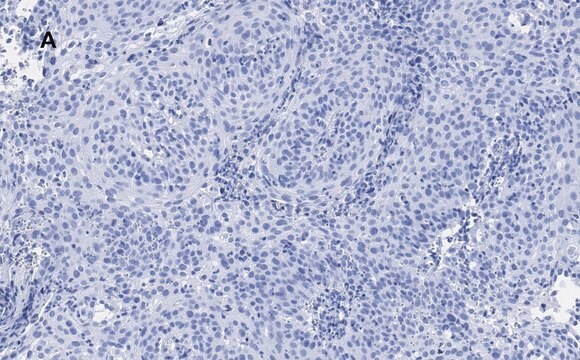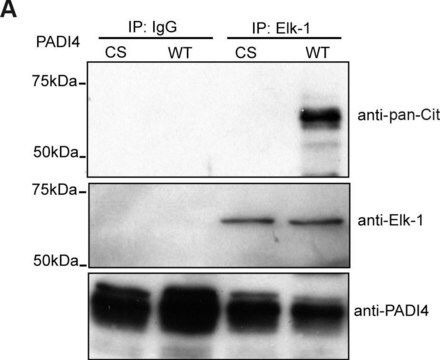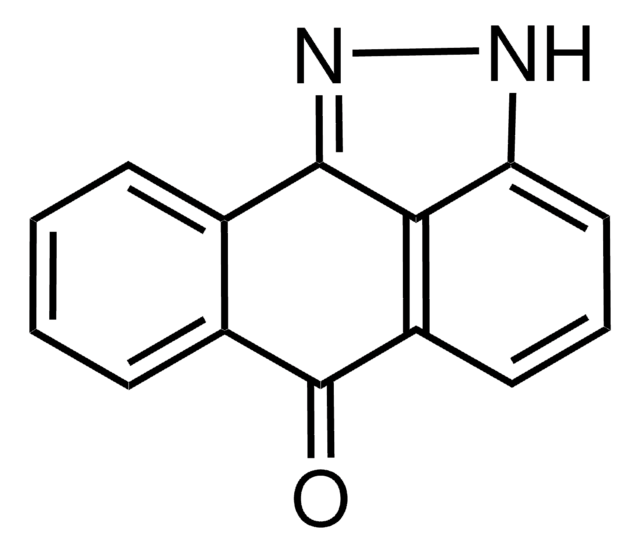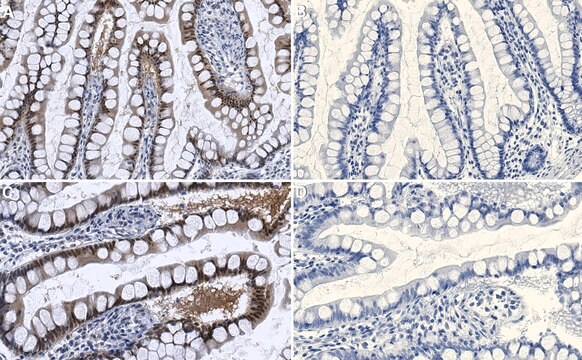MABN1840
Anti-Neuritin (CPG15) Antibody, clone A6.1
clone A6.1, from mouse
Sinônimo(s):
candidate plasticity gene 15, CPG15
About This Item
Produtos recomendados
fonte biológica
mouse
forma do anticorpo
purified immunoglobulin
tipo de produto de anticorpo
primary antibodies
clone
A6.1, monoclonal
reatividade de espécies
rat, human
reatividade da espécie (prevista por homologia)
monkey (based on 100% sequence homology), bovine (based on 100% sequence homology)
embalagem
antibody small pack of 25 μg
técnica(s)
western blot: suitable
Isotipo
IgG2bκ
nº de adesão NCBI
nº de adesão UniProt
modificação pós-traducional do alvo
unmodified
Informações sobre genes
human ... NRN1(51299)
Descrição geral
Especificidade
Imunogênio
Aplicação
Neuroscience
Qualidade
Western Blotting Analysis: 0.5 µg/mL of this antibody detected recombinant human/rat Neuritin (CPG15).
Descrição-alvo
forma física
Armazenamento e estabilidade
Outras notas
Exoneração de responsabilidade
Não está encontrando o produto certo?
Experimente o nosso Ferramenta de seleção de produtos.
Certificados de análise (COA)
Busque Certificados de análise (COA) digitando o Número do Lote do produto. Os números de lote e remessa podem ser encontrados no rótulo de um produto após a palavra “Lot” ou “Batch”.
Já possui este produto?
Encontre a documentação dos produtos que você adquiriu recentemente na biblioteca de documentos.
Nossa equipe de cientistas tem experiência em todas as áreas de pesquisa, incluindo Life Sciences, ciência de materiais, síntese química, cromatografia, química analítica e muitas outras.
Entre em contato com a assistência técnica








